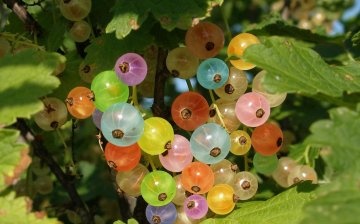What are good currant seedlings. Pest and disease control
Have you seen at least one garden without a currant bush? If so, then for sure, only once. Small berries of currants are filled with vitamins A and C, which help to cope with colds and even the flu virus. Therefore, tea from currants (especially black), along with honey and raspberries, are saved both at the very beginning of the disease and in the midst of it.
In addition to the berries themselves, leaves and stems are also used to brew a healing and tasty drink. Jam, jelly are made from currants, they are frozen, and compote is also not complete without currants.
With proper care, currant seedlings give an excellent harvest. They do not like severe drought and shade, although they are more lenient towards the latter. They need loose soil. And during the flowering period and before winter - fertilized. Manure and mineral fertilizers do the best with this.
Features of caring for currant seedlings
For all the unpretentiousness of currant seedlings, there are various nuances in caring for them. So, caring for black currants is significantly different from caring for red and white currants. The main difference lies in the pruning of the bushes, which produces regular and abundant fruiting.
- Black currants require annual pruning. It is produced in spring and autumn, removing old dried branches. Thus, new shoots become stronger.
- Varieties of red and white currants do not need frequent pruning. Plants give a good harvest even without it, and within 6 years. Only light shallow thinning is recommended for air and light access.
Diseases and pests of currant seedlings. Fighting them
Currants are very often infested by aphids, ticks, moths, gall midges or sawflies. However, in addition to these "amateurs", you can often notice redness and bumps on the leaves caused by common diseases of currant seedlings (anthracnose, powdery mildew). This leads to drying out of the leaves and shoots, and then the death of the entire bush.
There are many ways to combat pests and diseases. Someone chooses folk methods. And for gardeners who believe that such methods are ineffective, they find means of struggle in chlorophos, celtan, colloidal sulfur, nitrafen, karbofos, iron cupros. The main thing is to adhere to the recommended proportions.



